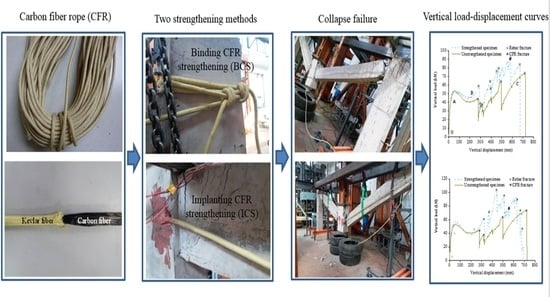Strengthening of Precast RC Frame to Mitigate Progressive Collapse by Externally Anchored Carbon Fiber Ropes
Abstract
Share and Cite
Pan, J.; Wang, X.; Dong, H. Strengthening of Precast RC Frame to Mitigate Progressive Collapse by Externally Anchored Carbon Fiber Ropes. Polymers 2021, 13, 1306. https://doi.org/10.3390/polym13081306
Pan J, Wang X, Dong H. Strengthening of Precast RC Frame to Mitigate Progressive Collapse by Externally Anchored Carbon Fiber Ropes. Polymers. 2021; 13(8):1306. https://doi.org/10.3390/polym13081306
Chicago/Turabian StylePan, Jianwu, Xian Wang, and Hao Dong. 2021. "Strengthening of Precast RC Frame to Mitigate Progressive Collapse by Externally Anchored Carbon Fiber Ropes" Polymers 13, no. 8: 1306. https://doi.org/10.3390/polym13081306
APA StylePan, J., Wang, X., & Dong, H. (2021). Strengthening of Precast RC Frame to Mitigate Progressive Collapse by Externally Anchored Carbon Fiber Ropes. Polymers, 13(8), 1306. https://doi.org/10.3390/polym13081306





